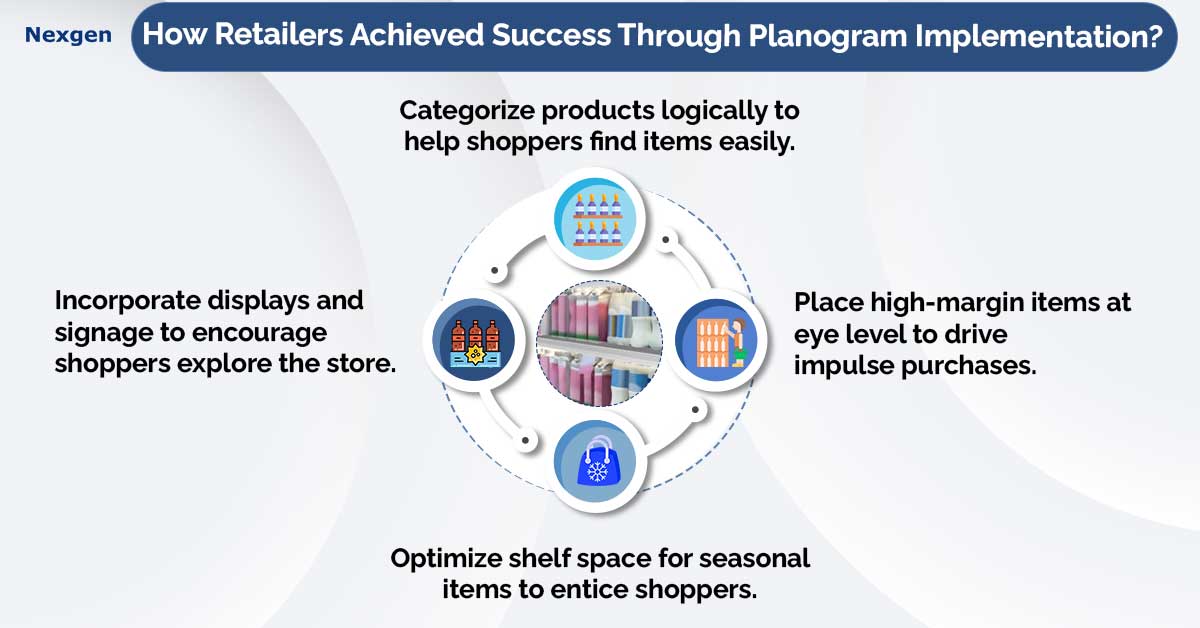In retail, every inch of shelf space matters. The strategic placement of products can significantly influence consumer behavior, boost sales, and enhance the overall shopping experience. One powerful tool that has helped retailers achieve remarkable success is the planogram. This blog explores how retailers have leveraged planogram implementation to transform their stores, optimize space, and drive profitability.

- Boosting sales through strategic placement: One of the most significant advantages of planogram implementation is its ability to increase sales by strategically placing high-margin products in prominent positions. For instance, a leading supermarket chain can use planograms to place best-selling items at eye level and near the checkout counters. This simple yet effective strategy can increase sales for those products within the first quarter of implementation. The strategic placement of products, guided by shelf space planning, can significantly enhance visibility, and drive impulse purchases.
- Optimizing space for seasonal products: Retailers often struggle with space management, especially during seasonal peaks. For instance, if a retailer faces this challenge, they can overcome it by implementing planograms that dynamically adjust product placements based on seasonal demand. By rotating in-season items to the front of the store and reallocating shelf space accordingly, the retailer can increase seasonal product sales. Planograms enable retailers to adapt quickly to seasonal changes, ensuring that the most relevant products are always front and center.
- Enhancing customer experience with planograms: Retailers can utilize planograms to create an intuitive and seamless shopping experience. By categorizing products logically and ensuring a smooth flow from one section to another, customers could easily find what they were looking for. This approach can improve customer satisfaction and result in an increase in the average transaction value.
- Reducing overstock and out-of-stock Situations: Stock management is a critical aspect of retail success. For example, if a grocery chain faces issues with overstock and out-of-stock items, which negatively impact sales and customer satisfaction. They can implement planograms integrated with inventory management systems; the retailer could optimize product replenishment. This can result in a reduction in overstock and a decrease in out-of-stock incidents.
Overview of Nexgen POG
Nexgen POG is a robust and user-friendly cloud-based visual merchandising tool. It is designed for quick and efficient planogramming with minimal effort. Planogram in retail can be designed by easily dragging and dropping the products. The multi-device compatibility feature of POG allows you to obtain, share and edit planogram on any device, including your phone. It helps in designing store-specific planograms for increased product visibility and sales.
Get Your Free Trial Now!